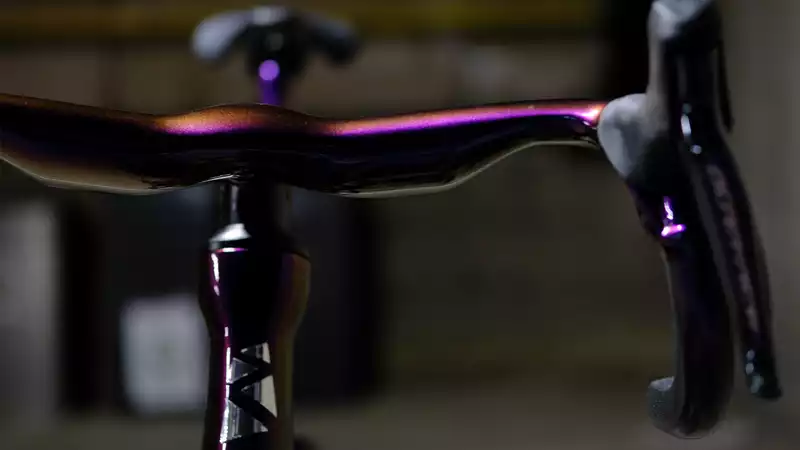On January 1, a series of UCI regulations will go into effect, including new rules regarding the minimum width of a rider's handlebars.
The changes limit the width of road bike handlebars to 350 mm when measured from the outside to the outside of the drop.
Article 1.3.012 of the Clarification Guide to the UCI Technical Regulations relates to the overall dimensions of the bike and previously limited only the maximum width of the bike.
With the update, the rule now states that "The maximum bicycle width of 500 mm is directly related to the maximum approved overall width of the handlebar (outer - outer). The minimum overall width (outside - outer) of conventional handlebars (road events) and base bars (road and track events) will be limited to 350 mm."
The rules now state.On the road, there has been a gradual trend in recent years to narrow the surface area of bars to reduce aerodynamic drag. Riders such as Dan Bigum, Victor Kampanaerts, and Jan Willem van Schip have constantly pushed the envelope, the latter gaining attention in 2019 with his ultra-narrow handlebars.
The trend has permeated bicycle design as well: in 2021, Ribble launched its Ultra SLR aero bike, with an optional "Pro" bar with a hood width of just 33 cm and a maximum width of 37 cm. More recently, Trek followed suit with the Madone SLR, which now features handlebars that flare out 1.5 cm from hood to drop. According to Trek, the narrower hood is worth 10 watts of aerodynamic improvement in rider position.
The newly revised rules appear to be a safeguard to prevent riders from going too far with the narrow-is-aero mindset, but do not appear to affect any rider's existing approach. Even Jan Willem Van Ship's bar was legal because it was a 32 cm track drop bar at the hood, but flared out to 36 cm at the drop. However, the same cannot be said for the Speeco bar he used in his drop at the Baloise Belgian Tour, as it violates the "forearm on the bar" rule.
Somewhat related, there is another new rule that affects the maximum reach of a rider. Rule 1.3.022 has been amended to state that "In no case shall the front of the handlebar exceed a vertical plane passing a horizontal distance of 100 mm from the axis of the front wheel spindle."
This means that the front of the bar (most commonly the leading edge of the drop) must not be placed more than 10 cm forward of the center of the hub.
The UCI states that this position places the bar within the "control zone" of the bike: "The more forward the handlebar is positioned, the less maneuverable the bike is and the more difficult it is to react quickly to obstacles or wind gusts. Additionally, this shifts the rider's center of gravity on the bicycle, further increasing the risk of losing control."
These rules coincided with the ratification of aero tricks in team car time trials.
There were also new rules regarding time trial positioning, with three levels of rider height. Previously, only riders over 190 cm tall were subject to the relaxed rules regarding rider positioning. Article 1.3.023 of the new rule divides riders into three height tiers: riders under 180 cm, riders between 180 cm and 189.9 cm, and riders over 190 cm, with the middle tier requiring the submission of a height certificate.


Comments